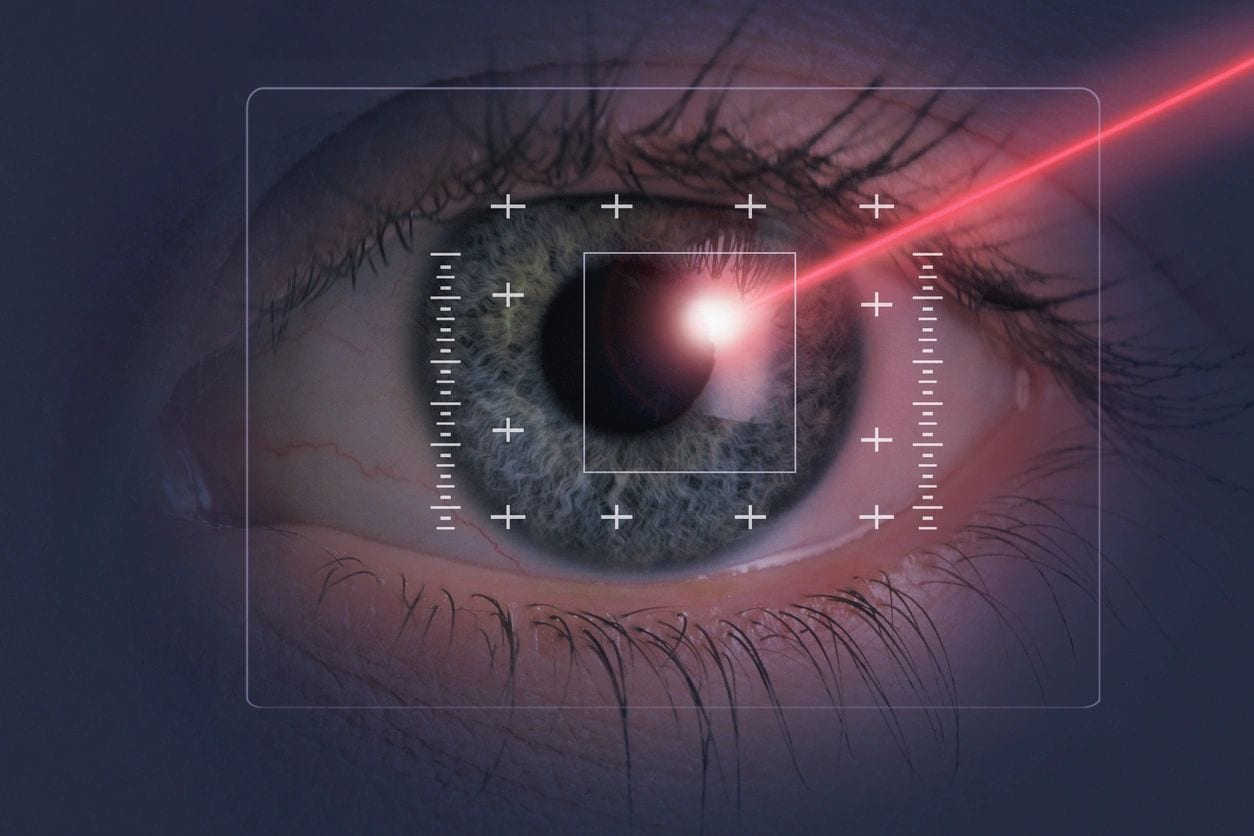Find LASIK Surgery Abroad with Make Medical Trip
This page will explain the different types of LASIK eye surgeries and how they are carried out. If you would like more information about eye surgery and what you can expect during an operation, you’re in the right place.
During the consultation
Meeting with the doctor
The doctor should collect some basic information about your health and vision from you and recommend the best procedure to correct your vision. They will explain how the procedure works and what kind of results you can expect in your specific case.
Take this opportunity to ask any questions you might have about your diagnosis, the procedure, recovery, and any concerns you might have. See our list of questions to ask your doctor for some examples of things you might need to consider. Be sure to mention any other medical conditions you have, and any medications or supplements you are taking. If it helps you to remember, consider writing a list of questions to ask and taking notes on your doctor’s instructions. Some patients use a voice recorder so they can listen back over the conversation.
The ophthalmologist will make a prescription for the changes they make to your vision. Make sure you get a copy of this prescription in case you need revision surgery in the future.
Eye exams
Your doctor will perform tests of your vision, as well as several tests of the conditions of your eye. They may also map the surface of your eye to help the surgeon plan the procedure. During these exams, the doctor may put drops in your eyes that dilate your pupils, which may make it difficult to see. It’s recommended you bring someone with you to these exams to help you get home.
3 main types of laser eye surgery
WHAT IS LASIK?
LASIK stands for Laser Assisted In-Situ Keratomileusis. It is a surgical procedure used to treat myopia (nearsightedness), hyperopia (farsightedness), and astigmatism. (It’s a misconception that laser eye surgery cannot be used to treat astigmatism) It is the most common refractive eye surgery performed in the world. Most patients will undergo this procedure.
WHAT IS THE DIFFERENCE BETWEEN LASIK AND LASEK?
LASEK avoids some of the potential complications of the LASIK technique, but is only suitable for people who cannot undergo the normal LASIK procedure. LASEK may be a better option for patients with a high degree of myopia or whose occupations or hobbies place them at high risk of eye injury. However, the LASEK procedure can result in a longer recovery time and more discomfort during and after the procedure.
WHAT IS PRK?
PRK stands for Photo-Refractive Keratectomy. It also avoids some of the complications of the LASIK technique, but is still less popular than LASIK. PRK may be a good option for patients with a high degree of myopia or who have a naturally thin cornea, which may make LASIK more dangerous.
Before the procedure
During your consultation, you’ll be given instructions to prepare for the procedure. If you wear contact lenses, you will be asked to stop wearing them for a number of days before surgery. You may also be given antibiotic eye drops to use beforehand to help prevent infection. Be sure you ask the surgeon for their pre-surgical correction prescription. It will be very important if you should need revision surgery in the future, or if your vision changes.
You will be unable to get back to your hotel alone; you will need to have someone with you to help you.
Anesthetic
Before the procedure, numbing drops will be applied to your eye so that there is no pain during the procedure. You may also be given sedation to help you relax, although you’ll remain awake through the entire procedure.
Procedure
Preparing for the incision
After your eye is numbed, it is positioned under the laser and a lid speculum is used to hold the eyelids open. It might look scary
feel nothing. If it is uncomfortable, you should mention this to the surgeon as you may need stronger anesthetic drops.
The doctor will use a special ink marker to mark where the cornea is and a suction ring is applied to the surface of the eye to hold it still. Again, with the numbing drops this shouldn’t cause any discomfort.
Vision correction procedure
LASIK
– During the LASIK procedure, the surgeon uses a surgical scalpel or a laser to create a flap through the epithelial and stromal tissues, which is pulled back. The patient then stares at a target light while the laser is used to correct the cornea. While the laser is working you might feel slight pressure on your eye and hear a loud clicking sound. The laser takes only a few seconds to reshape the cornea. The flap is then replaced and seals itself shut like a bandage. It is important that this flap is allowed to heal over the next several days.
LASEK
– The LASEK procedure is similar to LASIK in that a flap is created in the outer layers of the cornea. One edge of the flap is left attached to the cornea, and it is only cut through the epithelial layer, which is much thinner than for the LASIK procedure. The laser is then used to correct the cornea and the flap is replaced and allowed to heal.
PRK
– With the PRK procedure, the outer layer of the cornea is completely removed and discarded. The laser is then used to reshape the cornea. The eyes are bandaged and the epithelium is allowed to grow back over a few days.
In each case, the procedure takes around 5 minutes for each eye. The doctor may place a protective contact lens over your eyes that act like a bandage, or they may place actual gauze over your eyes, which will be removed the next day.
After procedure and recovery
Post-op
Immediately after the procedure, the doctor will have you recover for a bit and then do a post-operative check-up. There may be very mild pain, itchiness, or dryness in your eyes but it is important that you don’t rub them. You will need help getting home, as your vision will be worse than usual for the next day or so.
Recovering at home
You will be given instructions for your recovery that may include wearing a shield over your eyes while you sleep for the next few days to prevent you rubbing them in your sleep. You may also receive antibiotic drops.
Follow-up appointments
Generally, patients return for a check-up the day after surgery as well. During this follow-up the doctor will check your vision, which should already show improvement. Over the next few days it should improve dramatically.
Results
Most patients achieve 20/20 or better vision after surgery, but every case is different. It is important to have realistic expectations for the results of laser eye surgery. Some patients, even though their vision improves, still need corrective lenses for all or certain activities. Patients with age-related myopia will likely still need glasses for reading and driving. Be sure to discuss with your surgeon what kind of results you can expect in your unique case.
You should notice a difference in your vision within 1-2 days after the procedure.
About Make Medical Trip’s Staff
MakeMedicalTrip.com makes medical travel easy by connecting patients with clinics, hospitals, and medical tourism agencies worldwide, completely free of charge. We have clinics specializing in everything from dentistry to bariatrics. Lean more about how Make Medical Trip works at www.makemedicaltrip.com/how-we-help-you/
If you are looking for a physician or doctor for Lasik Surgery or a country that offers it, please contact us by filling out our Inquiry Form or email us at Info@MakeMedicalTrip.com




